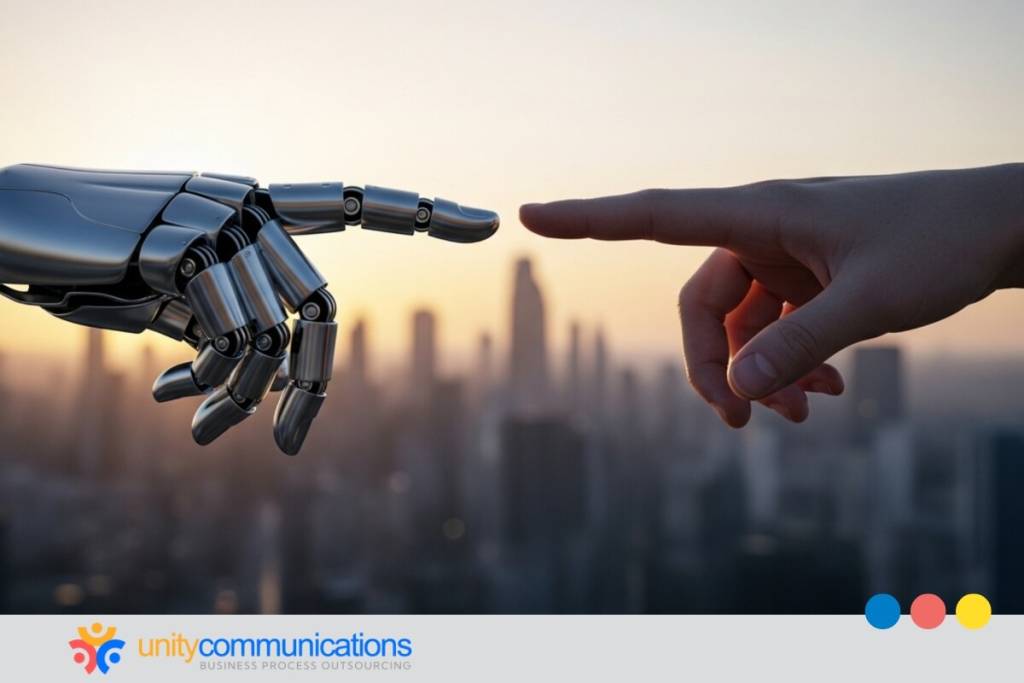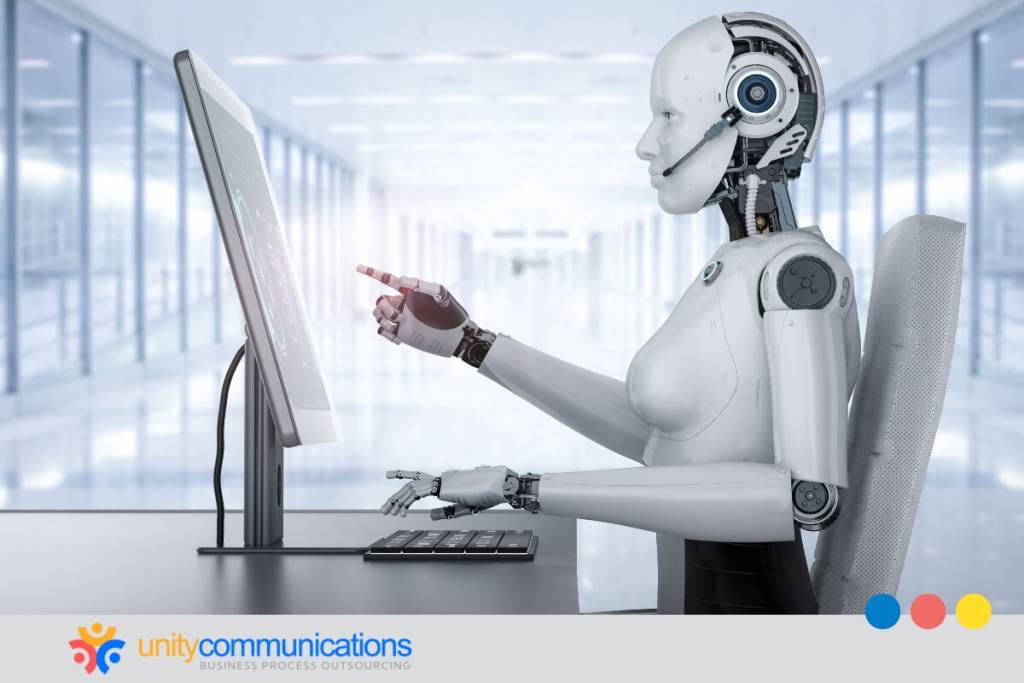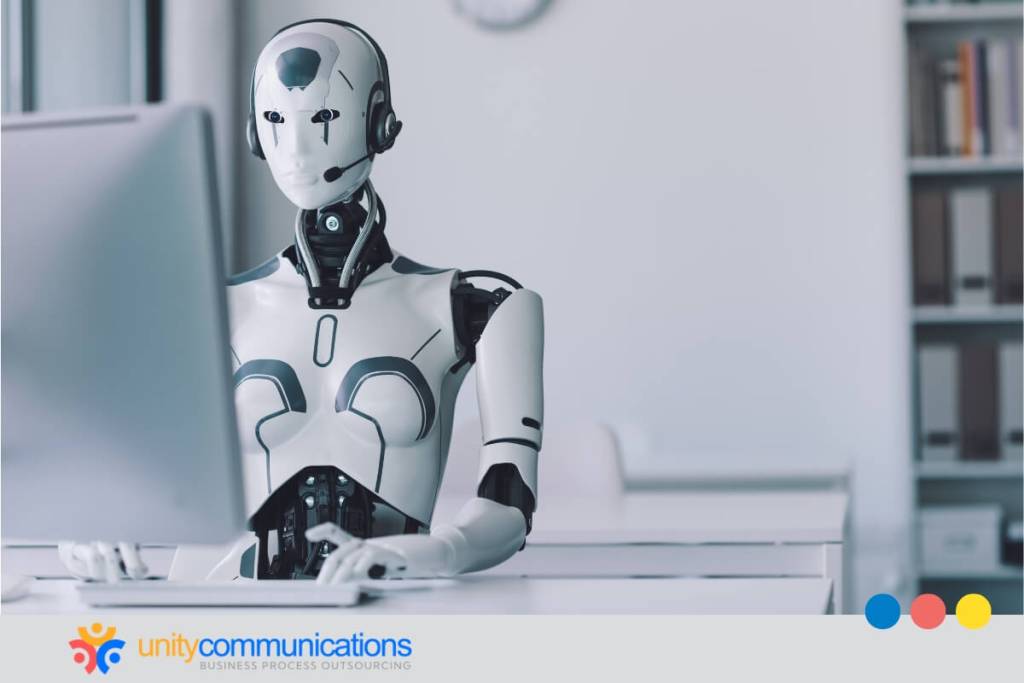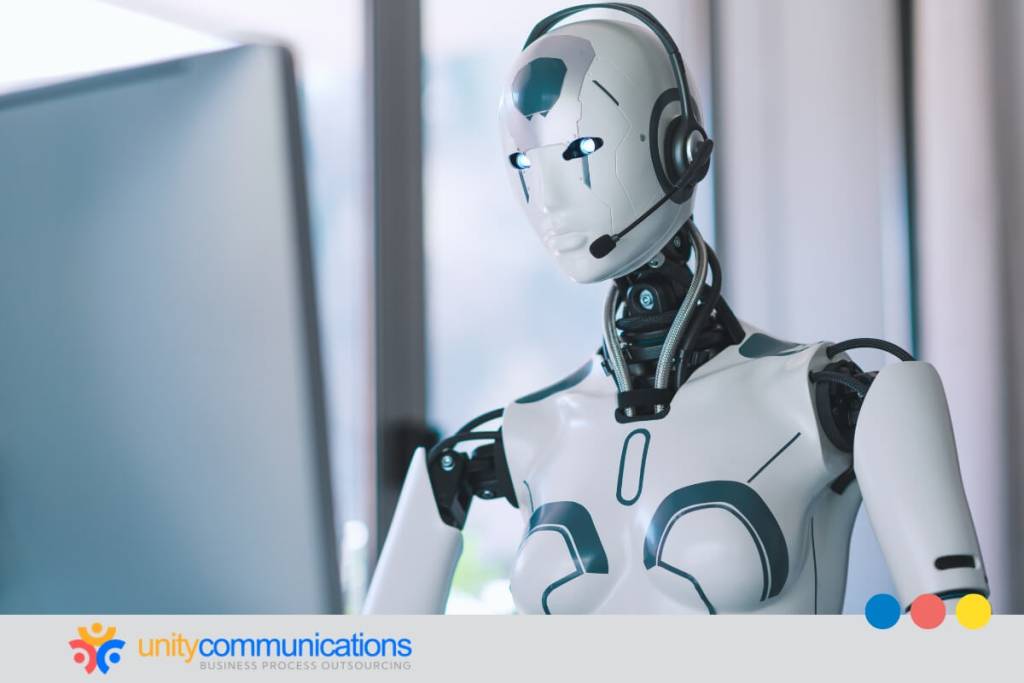Table of Contents
Business leaders today face a choice: continue relying on legacy systems that perform reliably within narrow boundaries or adopt artificial intelligence (AI) agents that can adapt to complexity and scale with evolving demands.
Understanding the difference between AI agents and traditional software agents is key to making the right investments.
In this comprehensive guide, we’ll examine their fundamental differences and explore key areas where AI agents deliver superior performance and measurable business value.
What are AI agents?

First, let’s answer a simple question: What is an AI agent? At its core, an AI agent is a system that perceives information, analyzes it, and acts toward a goal. Powered by machine learning (ML) and natural language processing (NLP), it can interpret unstructured data, make decisions, and adapt continuously.
Unlike traditional automation tools that only follow predefined steps, AI agents learn and improve over time. They can process vast amounts of data, recognize patterns, and refine their actions to deliver more accurate and personalized outcomes.
AI’s adoption is accelerating quickly. By 2028, 33% of enterprise software applications will include agentic AI, up from less than 1% in 2024. This rapid shift shows that businesses are moving away from static, rules-based systems toward intelligent, adaptive agents that can keep pace with change.
Building blocks of AI agents
AI agents are made up of interconnected parts that allow them to sense, decide, and improve over time. Key elements include:
- Data intake collects information from different sources such as user input, business databases, sensors, or application programming interfaces (APIs).
- Reasoning engine interprets the incoming data, identifies patterns, and weighs options against defined goals.
- Decision layer chooses the best action to take, whether answering a question, updating a record, or reallocating resources.
- Memory component stores context from past interactions so the agent can learn, adapt, and avoid repeating mistakes.
- Adaptation cycle reviews outcomes, compares them to expected goals, and adjusts strategies for better performance next time.
- Coordination layer collaborates with other agents, tools, or people to complete multi-step or cross-platform tasks.
Together, these elements give AI agents their strength: the ability to learn, adapt, and coordinate far beyond what traditional software agents can achieve.
What are traditional software agents?
To start, it helps to define what we mean by legacy or traditional software agents. At their core, these are rule-based programs designed to follow fixed instructions and carry out repetitive tasks. They don’t analyze or adapt. They simply execute their scripts.
For decades, businesses have used traditional agents. They are common in areas such as payroll processing, database scheduling, automated email routing, or system monitoring. In stable environments where the process doesn’t change, they provide speed, reliability, and efficiency.
But unlike AI agents, they cannot learn or evolve on their own. If business rules, compliance requirements, or customer expectations shift, these agents require a developer to manually update their scripts. This makes them slower to adjust and less useful in dynamic or unpredictable environments.
Core functions of traditional software agents
Traditional software agents ensure stability and consistency. Their functions typically include:
- Rule execution carries out tasks strictly as programmed, without deviation.
- Task automation handles repetitive processes, including payroll, invoice generation, or data backups.
- Structured input handling works best when data is clean and formatted, such as IDs, numbers, or standardized fields.
- Predictable outcomes produce the same results every time, ensuring reliability in routine operations.
- Manual updating requires human intervention whenever workflows, data formats, or business rules change.
These functions make traditional agents valuable for consistency and control, but also reveal their limitations. They are rule-followers, not adaptive systems—a sharp contrast to AI agents that can learn, personalize, and coordinate complex tasks at scale.
Top differences between AI agents and traditional software agents

Now that we know what AI agents and traditional software agents are, it’s time to see how they differ.
1. Adaptability vs. fixed rules
Traditional software agents operate under strict, pre-programmed rules. These rules work well in stable environments but fall apart when unexpected changes occur.
For example, an automated payroll system works seamlessly as long as tax rates and employee classifications remain the same. However, if regulations change suddenly, a developer must manually update the logic before the system can function correctly.
By contrast, AI agents adapt to change without waiting for manual reprogramming. They analyze new data, adjust their models, and optimize results in real time. Imagine a logistics AI agent that reroutes shipments instantly when severe weather disrupts the original plan. Instead of waiting for IT teams to rewrite workflows, the AI adapts immediately.
This adaptability is crucial in industries such as finance, healthcare, and supply chain management, where external conditions shift constantly. Businesses that rely only on fixed-rule systems often find themselves lagging behind competitors that use AI to anticipate and adjust quickly.
The difference between AI agents and traditional software agents is adaptability. One evolves continuously in response to new data and conditions, while the other stays frozen until humans re-code it.
2. Unstructured vs. structured data
Legacy systems handle structured data—neatly formatted inputs such as numbers, dates, and IDs. For instance, a traditional agent might process invoices if they follow the same template, but fail when the layout changes.
Structured data represents only a small portion of what businesses generate. According to MIT, 80% to 90% of the world’s data remains unstructured, making up the vast majority of what enterprises handle every day. This growing volume of unstructured data is often labeled “dark data.” It is hidden and mostly unused yet rich with potential for insight when paired with AI.
AI agents excel at processing unstructured information. Using NLP, computer vision, and ML, they can extract meaning from text, audio, and images. They can read legal documents, analyze customer sentiment, or review medical images without requiring perfectly structured input.
The difference between AI agents and traditional software agents lies in flexibility. One can process real-world, messy data at scale, while the other needs everything to fit neatly into boxes before it can act.
3. Autonomous decisions vs. scripted logic
Traditional agents are rule followers. They execute scripted tasks without deviation, such as sending the same confirmation email after a form submission. While consistent, they cannot weigh options, interpret nuance, or choose among multiple paths.
AI agents act autonomously. They evaluate inputs, assess probabilities, and make decisions without waiting for human oversight. In cybersecurity, an AI agent can detect anomalies, analyze the risk, and immediately isolate compromised devices long before a human could intervene.
This autonomy reduces bottlenecks and accelerates response times across industries. For instance, in customer support and business process outsourcing (BPO) operations, AI agents can decide whether to escalate an issue to a human agent, craft a personalized reply, or even preemptively solve the problem by issuing a refund.
The difference between AI agents and traditional software agents is autonomy. One intelligently makes choices that improve efficiency and outcomes, while the other rigidly executes only what has been scripted.
4. Continuous learning vs. static updates
Legacy agents don’t learn from experience. They perform the same way on day one as they do years later, unless developers manually update their rules. This static nature makes them vulnerable in environments where threats, regulations, or customer preferences evolve rapidly.
AI agents, by design, learn continuously. Every new interaction or dataset refines their performance. Fraud detection systems are a prime example. Older models relied on static thresholds, while modern AI-driven systems adapt to evolving fraud patterns daily.
This ability to learn gives businesses a significant advantage. In retail, AI agents track purchasing behaviors to refine recommendations over time. In healthcare, they improve diagnostic accuracy as they process more patient data. The more they work, the more intelligent they become.
The difference between AI agents and traditional software agents is growth. One evolves constantly with new inputs, while the other remains static until a human intervenes.
5. Context-aware vs. stateless
A customer contacting a company today expects seamless experiences. AI agents deliver this by remembering prior interactions and applying context to new engagements. If a customer previously complained about shipping delays, the AI agent can acknowledge that history and offer a tailored response.
Traditional agents are stateless, treating every interaction as new. They cannot recall what happened before, so the customers must repeat themselves, increasing frustration and damaging loyalty.
Context-aware AI agents transform transactional interactions into relationship-driven ones. They adapt tone, prioritize requests, and predict needs based on prior data. This leads to higher satisfaction and retention rates.
The difference between automation and an AI agent becomes clear here:
- Automation delivers consistency by repeating the same response every time.
- AI agents bring memory and adaptability to create continuity across interactions.
In short, the difference between AI agents and traditional software agents is memory: one connects experiences, while the other starts from zero every time.
6. Orchestration vs. predefined workflows
Modern enterprises rely on an increasingly fragmented ecosystem of tools from customer relationship management (CRM) and enterprise resource planning (ERP) systems to project management platforms and communication apps.
Traditional software agents use scripted workflows. When a process involves multiple systems, they can’t coordinate effectively, often leaving workflows rigid and siloed.
AI agents, however, excel at orchestration. They serve as integrators across these disparate systems, enabling seamless cross-platform coordination and real-time updates. This cohesion is especially valuable in hybrid cloud or multi-vendor environments, where workflow consistency and timely data exchange are critical.
Adoption trends reflect the strategic importance of this capability. A survey found that 94% of organizations consider process orchestration essential for successful AI deployment. In other words, without it, even robust AI systems risk operating in silos. AI agents solve this by unifying tools and workflows into a single, connected ecosystem.
7. Proactive vs. reactive
Traditional agents are reactive. They only act when triggered. They’re excellent at repetitive alerts or routine confirmations but lack the initiative to identify or resolve issues before they escalate.
AI agents, in contrast, are proactive. They monitor patterns, anticipate risks, and initiate actions without waiting for an external signal. This proactivity reduces risk and creates new opportunities. For example:
- In IT, this means detecting server strain and reallocating resources before downtime occurs.
- In sales, it means flagging churn risks and suggesting retention strategies before customers leave.
- In marketing, AI agents can proactively recommend campaigns tailored to changing customer behaviors, boosting returns.
The difference between AI agents and traditional software agents is initiative. One anticipates and prevents, while the other reacts after the fact.
8. Complex goals vs. linear tasks
Traditional software agents excel at linear processes with precise, repeatable steps and minimal variation. Payroll processing, invoice routing, or password resets fit this model perfectly. However, once complexity increases, traditional agents break down.
AI agents handle multi-step, complex goals that involve multiple dependencies:
- In healthcare, they can track patient progress across multiple treatments, labs, and consultations.
- In logistics, they can coordinate end-to-end supply chains with hundreds of variables.
This capability is game-changing for industries that face high uncertainty or require sophisticated planning. Businesses that adopt AI agents reduce inefficiencies and gain a competitive edge by handling scenarios too complex for static workflows.
It also reshapes how outsourcing works. Instead of relying only on rule-based automation for repetitive back-office tasks, BPO providers can now deploy AI agents to manage complex, adaptive processes that demand judgment and coordination.
The difference between AI agents and traditional software agents is in capability. One is built for complex, adaptive tasks, while the other is best for simple, repetitive ones.
9. Personalized vs. uniform outputs
Personalization drives growth in modern business. AI agents enable this by tailoring responses, recommendations, and solutions to individual preferences.
Traditional software agents generate uniform outputs. Every customer gets the same scripted response regardless of their needs or history. While this ensures consistency, it fails to create meaningful engagement.
AI agents create differentiated experiences that build loyalty. A retail AI agent might recommend products based on browsing behavior, while a banking AI agent might adjust financial advice based on spending patterns. This dynamic personalization sets businesses apart.
The difference between AI agents and traditional software agents is experience. One personalizes at scale, while the other standardizes.
10. Scalable intelligence vs. repetitive scale
Traditional software agents scale by duplication. They can be copied to handle more repetitive tasks, such as processing additional invoices. However, this works only in stable conditions. When regulations, data formats, or workflows change, their effectiveness drops because they can’t adapt without manual updates.
AI agents scale differently. They don’t just add volume; they add intelligence. As they process more data, they refine their models, becoming better at handling dynamic conditions such as detecting new fraud patterns or adapting to customer behavior shifts.
Their scalability works in two dimensions. Horizontally, they handle more volume across regions or departments. Vertically, they manage added complexity, such as compliance changes or market disruptions, without reprogramming.
This also highlights the distinction between an AI agent and a chatbot. A chatbot can scale to answer more questions, but still gives scripted responses. An AI agent scales volume and learns, personalizes, and coordinates across systems. In short, chatbots scale repetition, while AI agents scale intelligence.
The bottom line
AI agents represent a leap forward in capability compared to traditional software agents. They adapt, learn, anticipate, and personalize in ways traditional systems cannot.
For businesses, the choice is clear: AI agents unlock agility and intelligence, while traditional software agents provide predictable but limited execution.
The difference between AI agents and traditional software agents is more than technical; it’s strategic. Organizations that understand these fundamental differences and act decisively will position themselves to thrive in rapidly evolving markets.
The question isn’t whether to adopt AI agents, but how quickly you can integrate them into your operations. Ready to modernize your operations with adaptive AI agents? Let’s connect.




